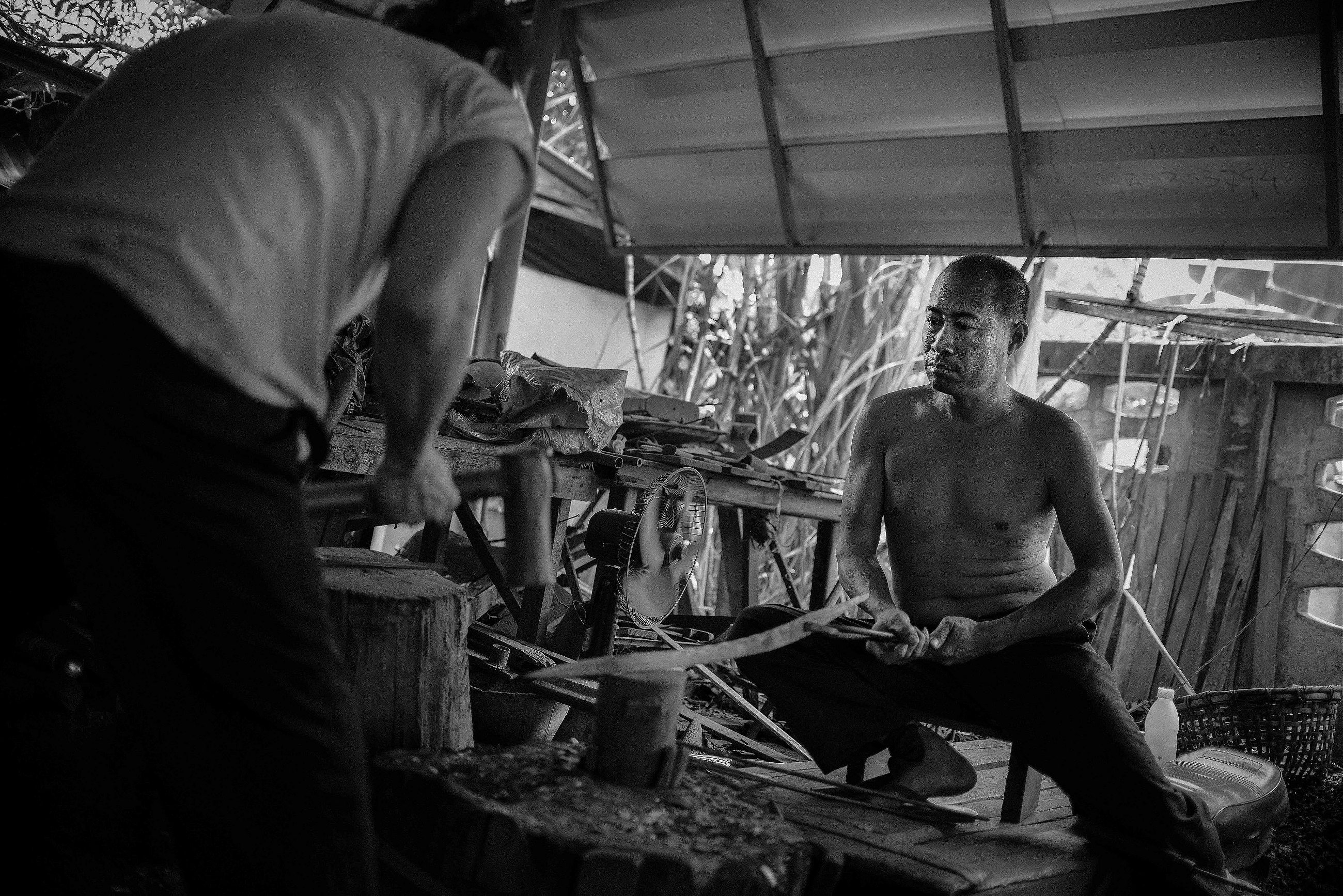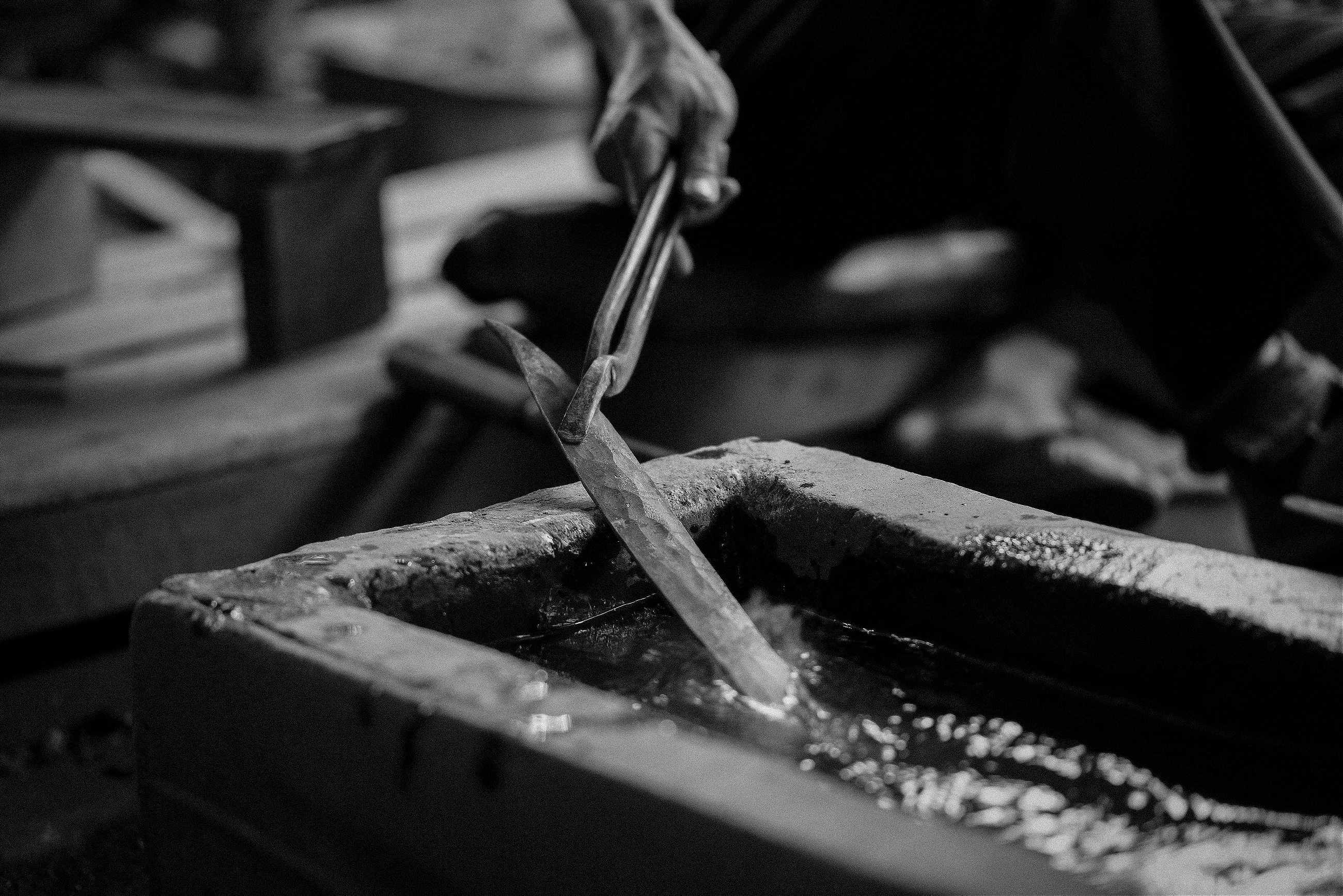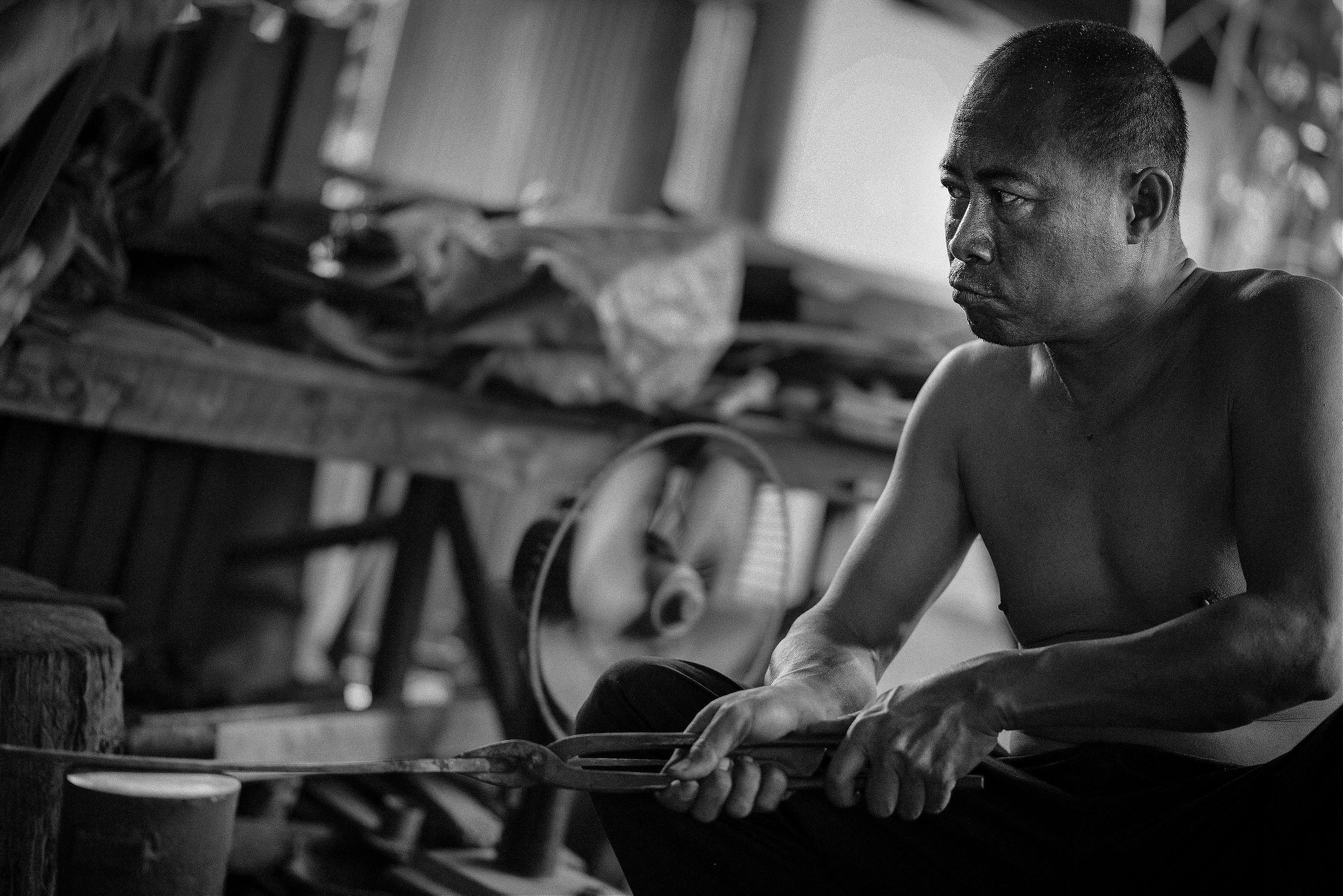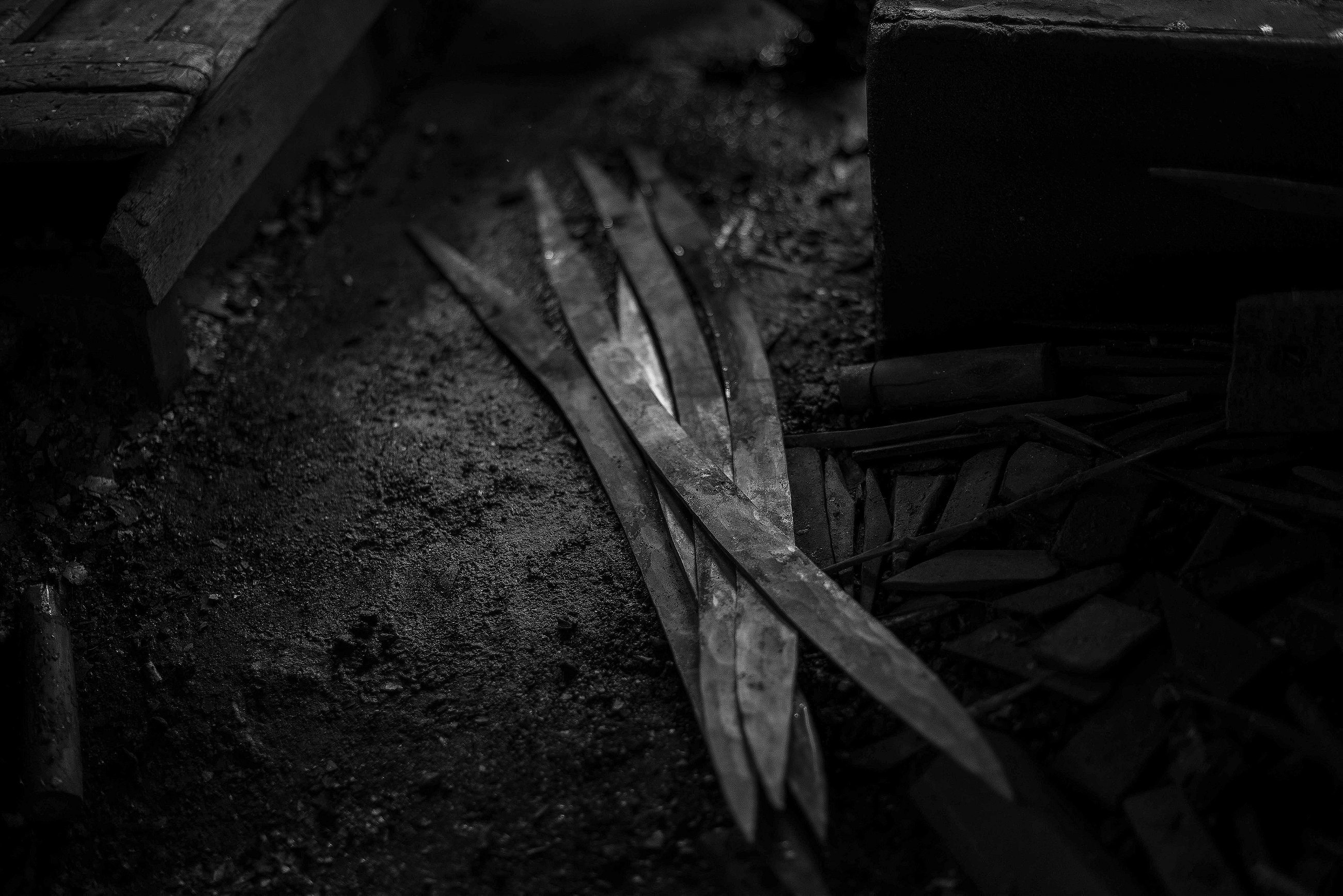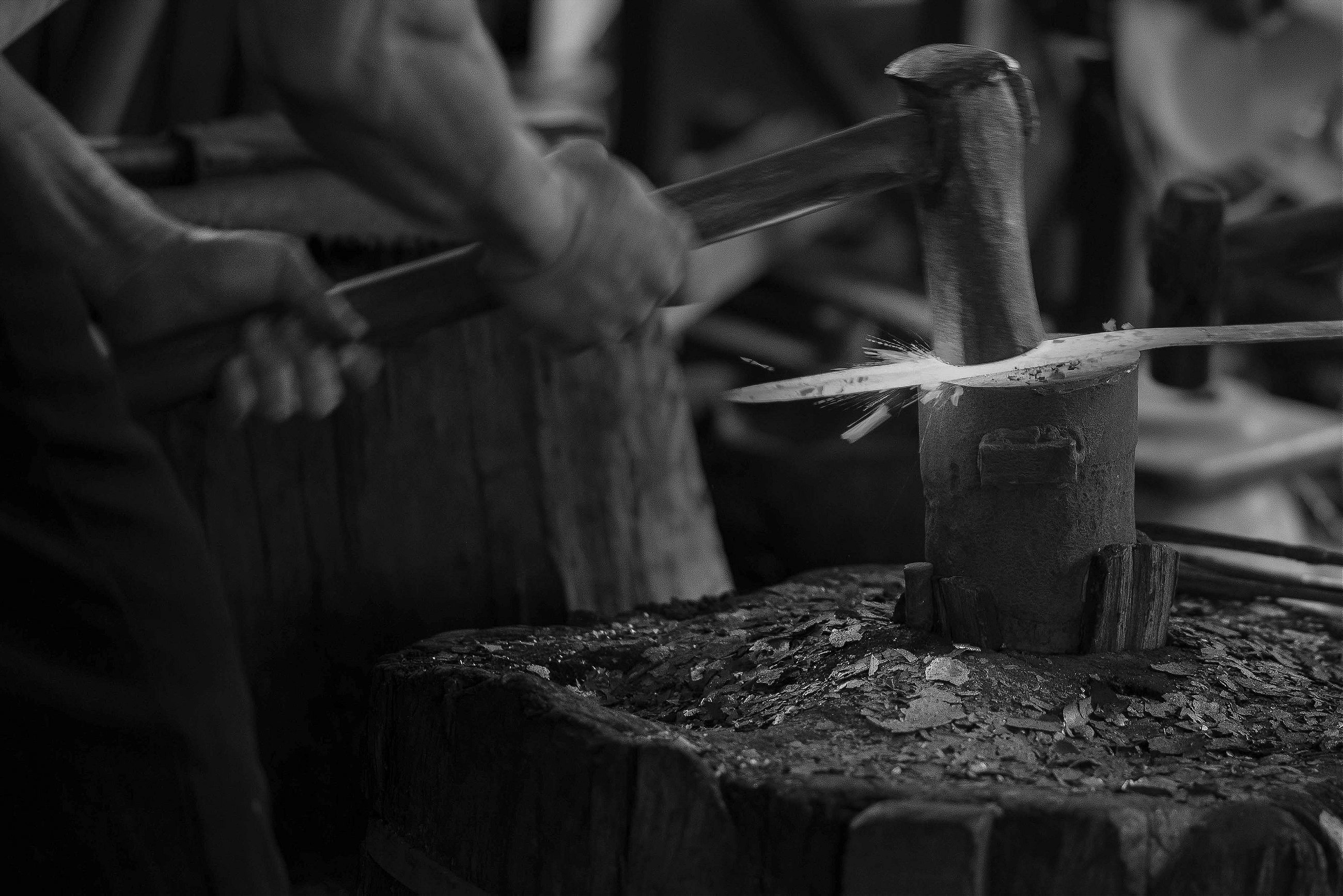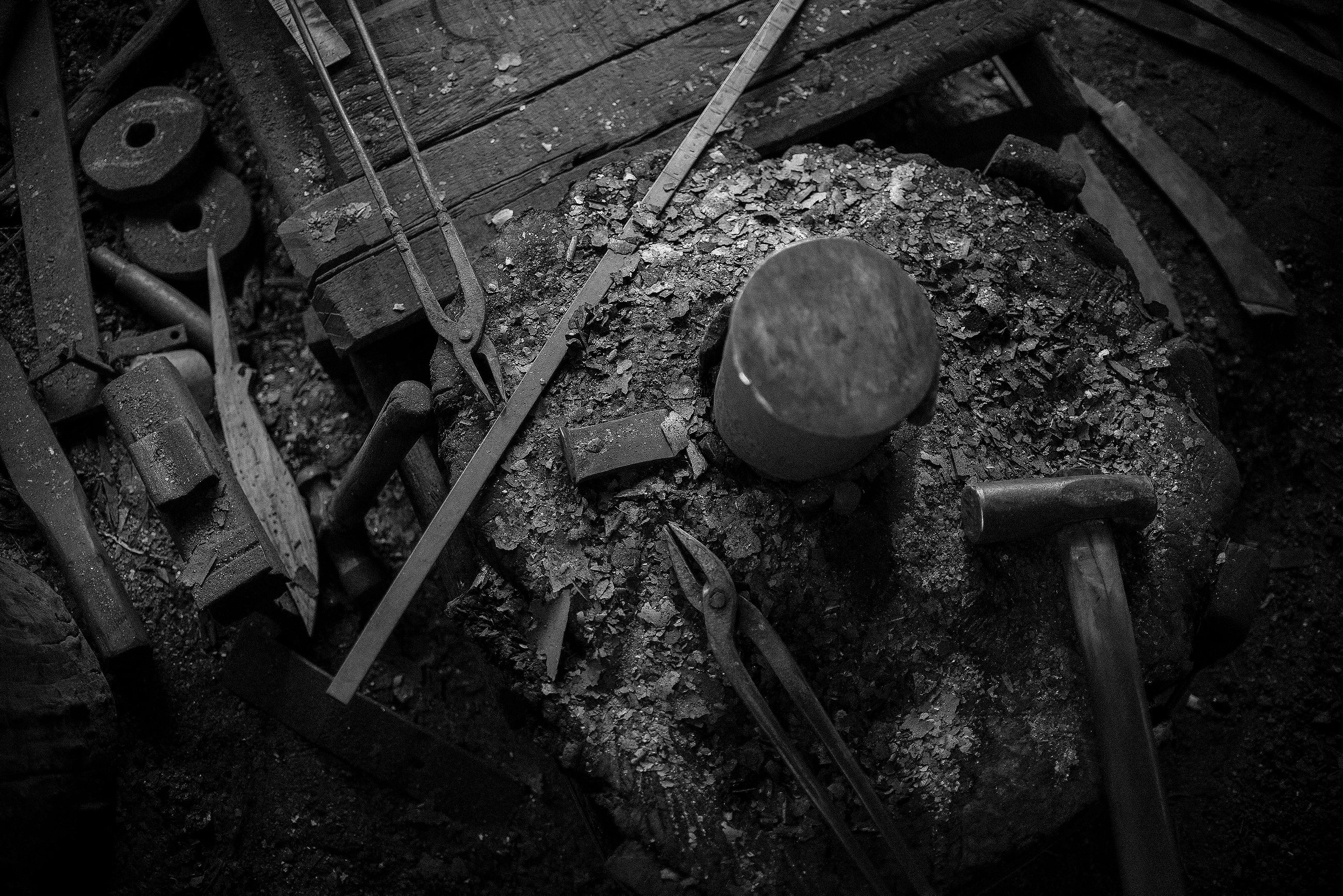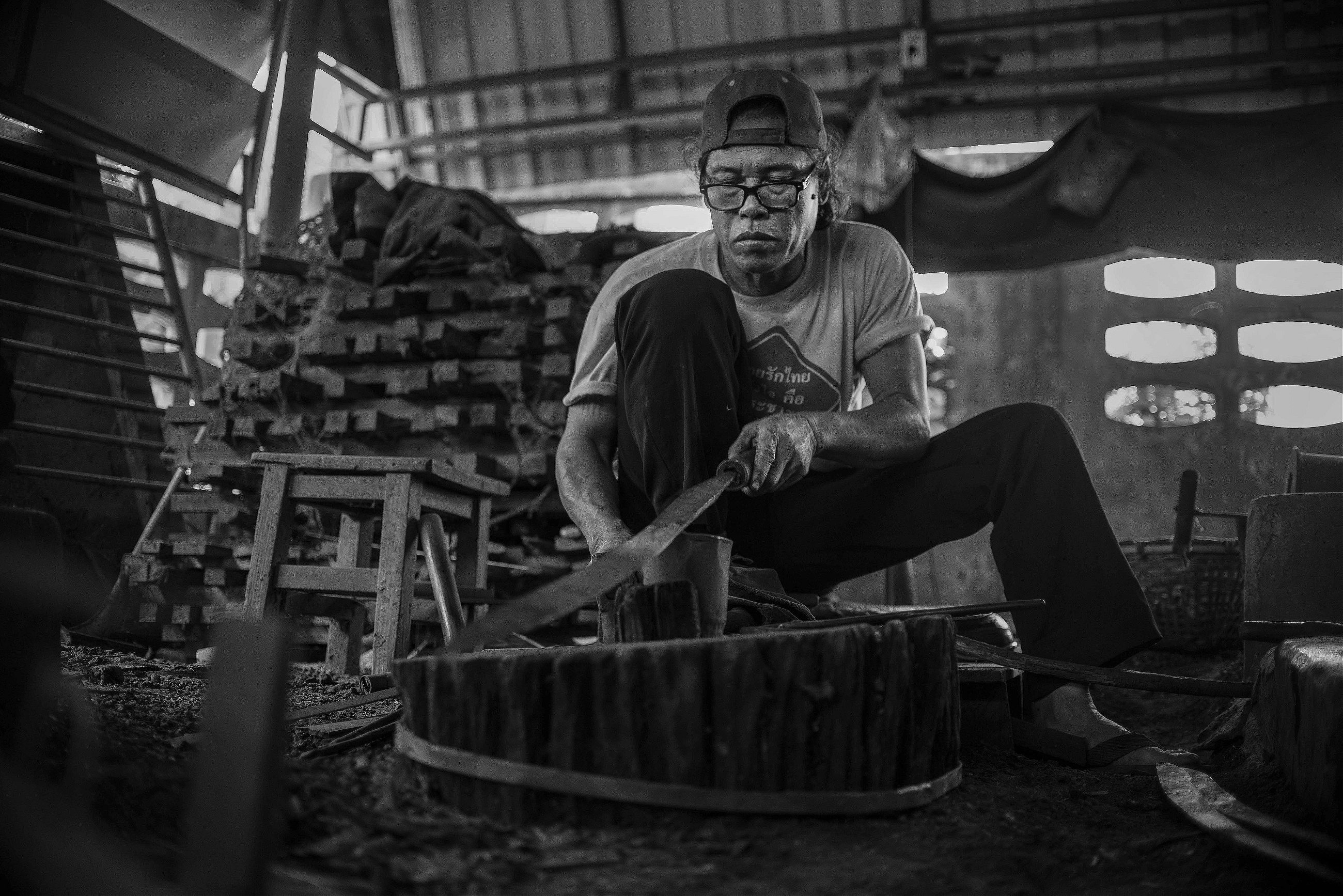For centuries, the curved Dha was the sword of choice for the warriors of southeast Asia. In a small foundry in northeast Thailand, the art of making them lives on.
The horsemen in the murals of Angkor Wat had them; so did the royal guard in Hue and the legendary Kachin Rangers who fought the Japanese in the hills of Myanmar during World War II. They all had Dha, a Burmese word for knife that refers to a wide variety of traditional knives and swords used for centuries across Indochina, from Yunnan to Vietnam.
Long and curved, with one side edged and a two handed grip, the origins and creators of the sword are difficult to pin down. It possibly came with the Burmese people as they moved across the northwest from India, or perhaps with the Tai people as they migrated south from what is now Yunnan province in China, or it might have also come from the Khmer and Mon people, who were long established in the region before either the Burmese or Tai peoples arrived. What is known is that these light and efficient weapons could be forged in simple foundries, fired with bamboo bellows, sheathed in wood or rattan. Empires ebbed and flowed on the skills of the warriors using them.
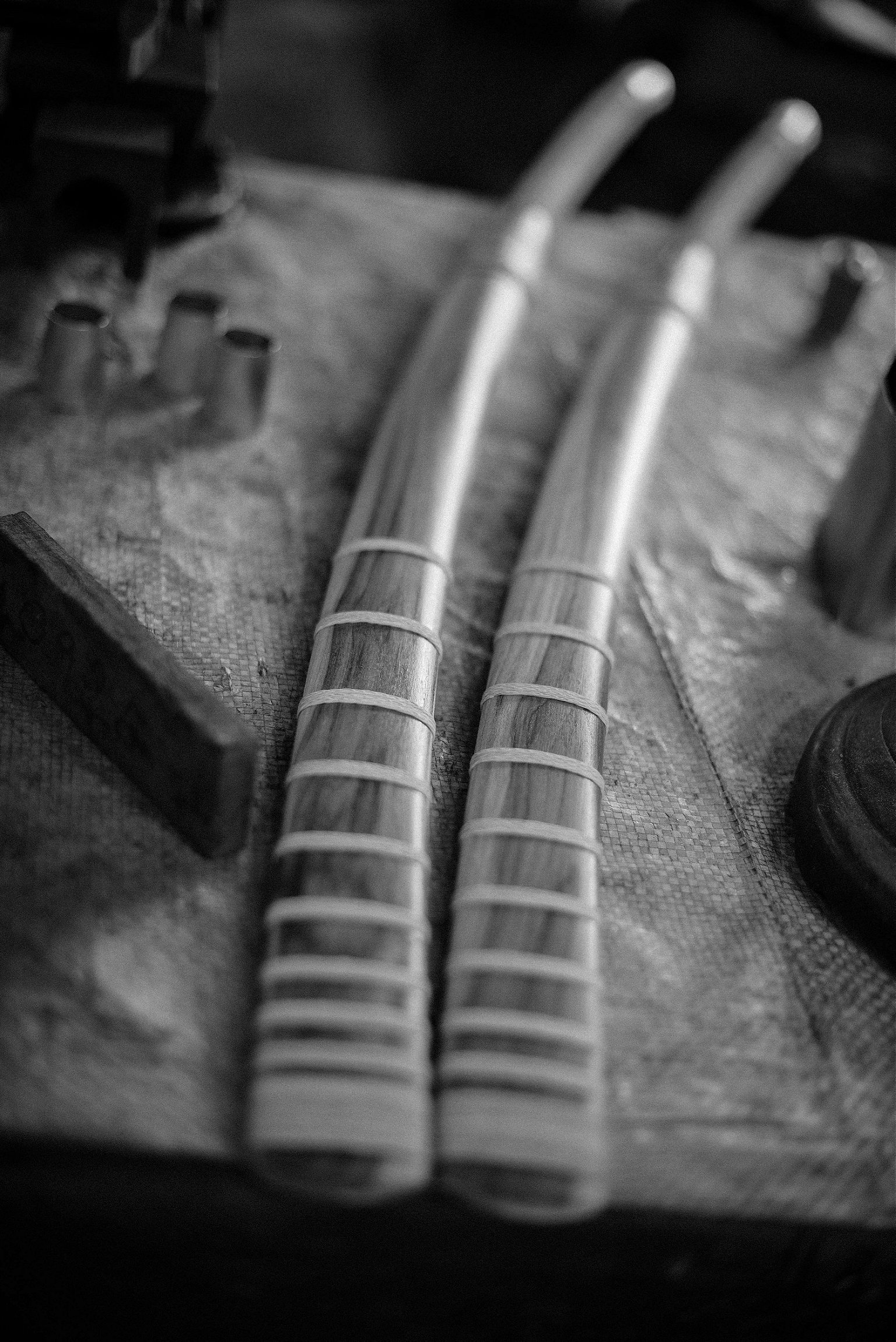
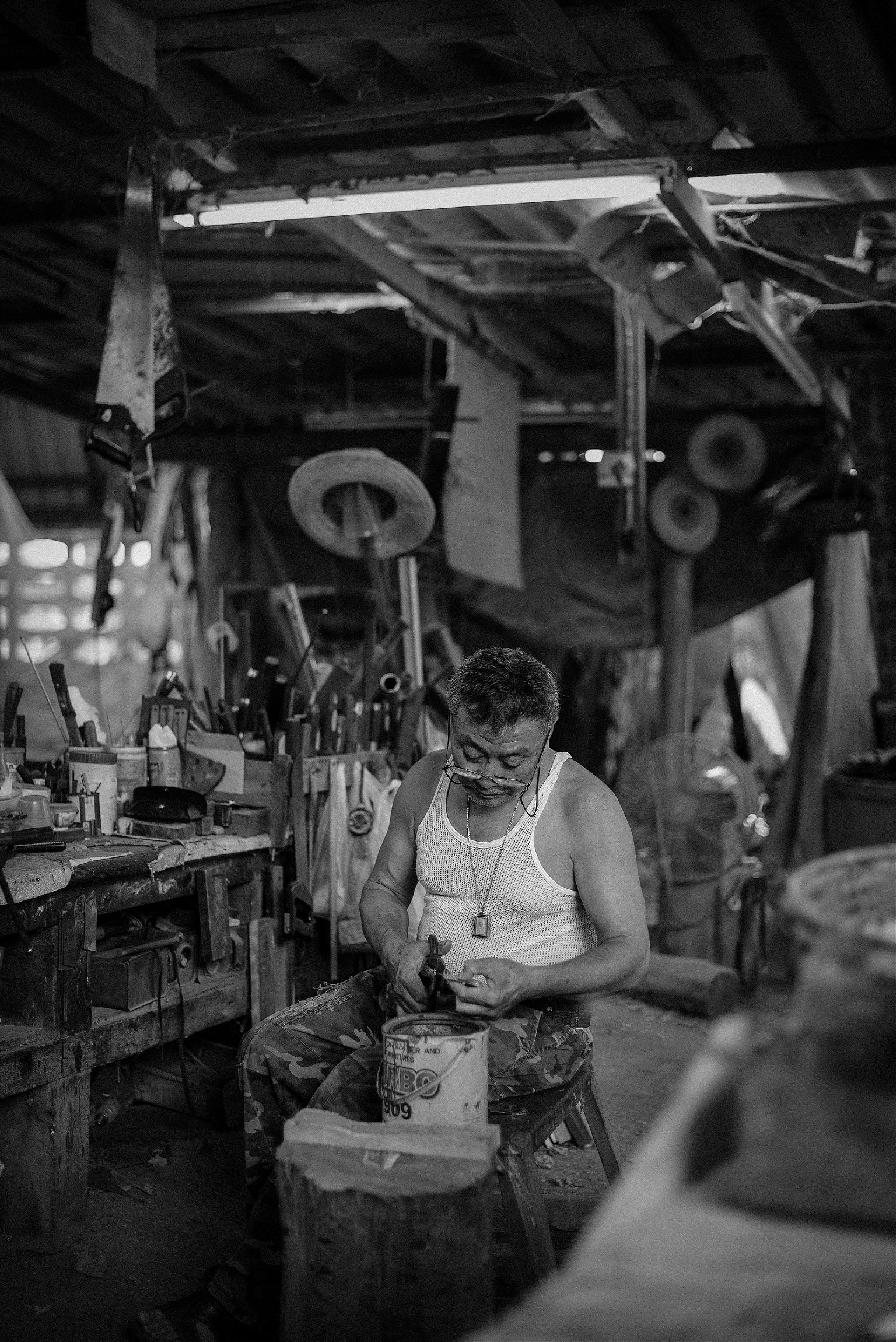
Despite its rich history, depicted everywhere from the walls of Angkor Wat to the movements of Thai Krabi Krabong masters, the Dha is endangered. The traditional methods of smithing the Dha are slowly fading as older craftsmen die without having passed on their skills.
On a small rural road in the suburbs of Lampang in Northern Thailand, tucked behind a buzzing Tesco Lotus sign, sits one of the last traditional Dha sword makers in southeast Asia. Ajarn Kor Neeow is one of the few sword masters in southeast Asia who continues the art of Dha making. For that, he is known as the best sword smith in Thailand. All his swords are forged from imported high-quality Japanese steel and are all hand finished by his team of craftsmen. The build quality is so high and his reputation so far reaching that he has even made swords for the King of Thailand. The craft may be endangered, but as long as Ajarn Kor Neeow’s hammer strikes, it is not dead.
